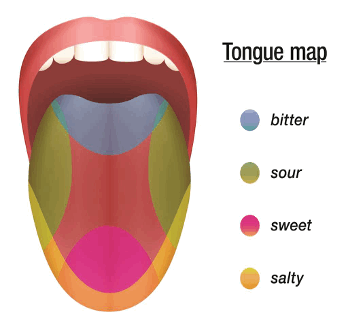These recipes—the taste bud exercise and the tomato or peach bruschetta—are part of the Foodie Classroom activities developed by Chef Dave Terrazas for our Charter a Summer of Learning guide.
Lesson 1: Taste Bud Exercise
1 whole strawberry (if there are strawberries allergies, you can substitute a piece of banana or other sweet and mild fruit)
1 tablespoon Kosher or sea salt
1 wedge fresh lemon, small (reserve remaining lemon for bruschetta recipes)
1 tablespoon cocoa powder
1 piece Parmesan cheese
Place each piece in a small cup or on a small plate to makes access easy.
Lesson 2: Bruschetta
Tomato Bruschetta
Ingredients
1 cup fresh tomatoes, diced (about 3–4 small Roma tomatoes)
4 tablespoons extra virgin olive oil
2 tablespoons fresh garlic, minced (about 2 cloves)
4 tablespoons fresh basil leaves, cut into ribbons (chiffonade), or torn
1 teaspoon lemon juice
1 pinch Kosher or sea salt
1 pinch ground black pepper
½ baguette or other French-style bread (I like bolillo rolls), cut into eight ½-inch slices, and toasted
2 tablespoons balsamic vinegar*
4 tablespoons finely shredded Parmesan cheese
Peach Bruschetta
Ingredients
1 cup fresh peaches, diced (about two small peaches)
4 tablespoons extra virgin olive oil
4 tablespoons fresh basil leaves, either cut into “chiffonade” ribbons or torn (this recipe is best if you can find an Asian basil cultivar such as Thai or cinnamon, or alternatively lemon basil)
1 teaspoon lemon juice
1 pinch Kosher or sea salt
1 pinch ground cinnamon
1 pinch ground black pepper
½ baguette or other French-style bread (I like bolillo rolls), cut into eight ½-inch slices, and toasted
2 tablespoons balsamic vinegar*
4 tablespoons finely shredded Parmesan cheese (optional)
To prepare each bruschetta recipe:
To toast the bread, heat a medium size sauté pan over low heat on a range. When the pan is heated (about two minutes), add each piece of bread to the sauté pan and allow each piece to toast, about thirty seconds. Flip each piece of bread and toast again for thirty seconds. Remove each piece of resulting toast from pan and reserve. You can also lightly brush each piece with some olive oil to enhance the toasting quality of each piece of bread.
In a medium size mixing bowl, combine all ingredients except the bread and balsamic vinegar, and gently toss just until ingredients are evenly mixed.
Using a tablespoon, spoon 1–2 tablespoons of the mixture from the bowl onto each piece of bread (depends on the size of your bread pieces). Using a teaspoon, drizzle 1 teaspoon of the balsamic vinegar onto each prepared piece of bruschetta.
Using a fine grater or micro plane tool, grate the Parmesan cheese over the bruschetta (as much as you like).
Serve immediately.
Visit the Foodie Classroom
Find more recipes in the Foodie Classroom activities developed by Chef Dave Terrazas for our Charter a Summer of Learning guide.
* Note about balsamic vinegar: There are many kinds of balsamic vinegar available for purchase. In America, many companies have begun using a four-leaf system on the bottle, which tells the buyer how pure and how thick the vinegar is. Most balsamic vinegar products contain a portion of red wine vinegar, which makes them more sour and thinner. The lower the number of leaves on the bottle label (the lowest being one leaf), the more red wine vinegar it contains. A four-leaf vinegar product is almost or is 100% true balsamic vinegar, is very high quality, and is very thick and sweet. However, it is also the most expensive. For these recipes, the highest possible quality balsamic vinegar is recommended. Your taste buds will be able to tell the difference.
